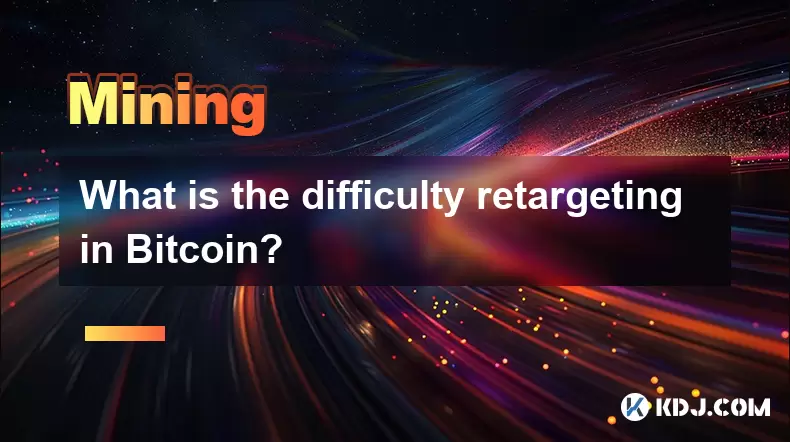-
 Bitcoin
Bitcoin $121,713.8152
3.06% -
 Ethereum
Ethereum $3,041.6437
2.42% -
 XRP
XRP $2.9499
5.12% -
 Tether USDt
Tether USDt $1.0000
-0.02% -
 BNB
BNB $704.1034
1.75% -
 Solana
Solana $166.7523
2.91% -
 USDC
USDC $0.9999
0.00% -
 Dogecoin
Dogecoin $0.2052
2.90% -
 TRON
TRON $0.3011
-0.47% -
 Cardano
Cardano $0.7461
1.42% -
 Hyperliquid
Hyperliquid $48.3650
1.12% -
 Stellar
Stellar $0.4548
3.52% -
 Sui
Sui $3.9527
14.50% -
 Chainlink
Chainlink $16.3300
5.87% -
 Bitcoin Cash
Bitcoin Cash $511.8016
1.25% -
 Hedera
Hedera $0.2395
1.40% -
 Avalanche
Avalanche $21.6526
2.06% -
 UNUS SED LEO
UNUS SED LEO $9.0073
-0.23% -
 Shiba Inu
Shiba Inu $0.0...01369
2.61% -
 Toncoin
Toncoin $3.0335
0.66% -
 Litecoin
Litecoin $96.6206
1.72% -
 Monero
Monero $355.1673
5.35% -
 Polkadot
Polkadot $4.0839
2.47% -
 Uniswap
Uniswap $9.3282
9.72% -
 Dai
Dai $0.9997
-0.01% -
 Ethena USDe
Ethena USDe $1.0004
-0.04% -
 Pepe
Pepe $0.0...01248
1.07% -
 Bitget Token
Bitget Token $4.4642
2.68% -
 Aave
Aave $325.0626
6.81% -
 Bittensor
Bittensor $418.1482
6.22%
What is the difficulty retargeting in Bitcoin?
Bitcoin adjusts mining difficulty every 2016 blocks to maintain a 10-minute block time, ensuring network stability and predictable supply.
Jul 14, 2025 at 09:28 pm

Understanding the Concept of Difficulty Retargeting
In the Bitcoin network, difficulty retargeting refers to the automatic adjustment of mining difficulty that occurs every 2016 blocks. This mechanism ensures that block production remains consistent, aiming for an average of one block every ten minutes. If more miners join the network and hashing power increases, blocks are found faster than expected. To counteract this, the difficulty is increased. Conversely, if miners leave the network and hashing power drops, the difficulty decreases accordingly.
This self-regulating system is essential for maintaining the integrity and predictability of Bitcoin’s supply schedule. Without it, fluctuations in hash rate could lead to unpredictable issuance rates and potential network instability.
The Mathematical Basis Behind Difficulty Adjustment
The formula used to calculate the new difficulty involves comparing the time it took to mine the previous 2016 blocks with the expected time of 20160 minutes (2016 blocks 10 minutes). The adjustment is calculated as follows:
new_difficulty = old_difficulty (actual_time / 20160)
However, there is a restriction: the difficulty cannot increase or decrease by more than 300% in a single retargeting period. This cap prevents abrupt changes that could destabilize the network due to sudden spikes or drops in hash rate.
For example, if it only took 10,000 minutes to mine the last 2016 blocks, the difficulty would be adjusted upward proportionally but not beyond the 300% limit.
Why Difficulty Retargeting Is Important for Network Security
Maintaining a consistent block interval is crucial for Bitcoin's security model. A stable block time helps prevent double-spending attacks and ensures that transaction confirmations remain reliable. If blocks were mined too quickly without adjusting difficulty, attackers could more easily manipulate recent transactions. On the other hand, if blocks take too long, the network becomes sluggish and less usable.
Moreover, predictable issuance through controlled difficulty adjustments supports Bitcoin’s monetary policy, reinforcing its scarcity-based value proposition.
How Miners Are Affected by Difficulty Changes
Miners must constantly adapt to difficulty retargeting events. When difficulty increases, miners with less efficient hardware may become unprofitable and shut down operations. Conversely, during periods of decreasing difficulty, previously unprofitable miners might restart their rigs.
This dynamic creates a natural selection process where only the most efficient mining operations survive long-term. It also leads to shifts in geographic distribution of mining, as regions with cheaper electricity gain advantage when difficulty rises.
- Miners monitor upcoming difficulty adjustments
- They may switch pools or coins depending on profitability
- Large mining farms often plan ahead based on projected difficulty
Real-World Examples of Difficulty Retargeting Events
Historically, significant difficulty adjustments have occurred during major market movements. For instance, during the 2020 Bitcoin halving, the difficulty initially dropped due to reduced miner incentives, followed by a gradual increase as surviving miners adjusted to the new reward structure.
Another notable event was in May 2021 when China banned cryptocurrency mining. This led to a sharp drop in global hash rate, triggering a downward difficulty adjustment to compensate for the sudden loss of mining capacity.
These examples illustrate how external regulatory and economic factors can influence the internal mechanics of Bitcoin’s difficulty retargeting.
Frequently Asked Questions
Q: Can difficulty retargeting cause delays in transaction confirmations?
A: Yes, during periods of sudden hash rate drops, blocks may take longer to be mined until the next difficulty adjustment. However, this effect is temporary and typically resolves after the next 2016-block window.
Q: Does difficulty retargeting affect all miners equally?
A: While the difficulty change applies uniformly across the network, its impact varies based on individual miner efficiency. High-cost miners may exit during upward adjustments, while low-cost miners benefit from reduced competition during downward adjustments.
Q: How is time measured for the difficulty calculation?
A: Bitcoin uses timestamps embedded in each block header. The difference between the timestamp of the first block in the 2016-block window and the last block determines the actual elapsed time used in the difficulty calculation.
Q: What happens if more than 2016 blocks are mined in a short time?
A: The network will automatically adjust the difficulty upwards at the next retargeting period, assuming the total time taken was significantly less than 20160 minutes. However, if the time deviation exceeds the allowed adjustment range, multiple retargeting cycles may be needed to normalize block intervals.
Disclaimer:info@kdj.com
The information provided is not trading advice. kdj.com does not assume any responsibility for any investments made based on the information provided in this article. Cryptocurrencies are highly volatile and it is highly recommended that you invest with caution after thorough research!
If you believe that the content used on this website infringes your copyright, please contact us immediately (info@kdj.com) and we will delete it promptly.
- Zebec Network: Decoding the Buzz Around ZBCN and Crypto Payments
- 2025-07-15 00:30:12
- LUNC Price Bullish Breakout Confirmed: Analyst Predicts 555% Surge!
- 2025-07-15 00:30:12
- Trump, Bitcoin, and Reserves: A New Era for Crypto?
- 2025-07-14 22:50:11
- Bitcoin's Wild Ride: All-Time Highs and Crypto Week Mania!
- 2025-07-14 23:10:12
- Bitcoin's Wild Ride: Coin Surge and Fintech Experts Weigh In
- 2025-07-14 23:10:12
- Meme Coins Primed for a Bull Run: Finding the Next Undervalued Gem
- 2025-07-14 23:50:12
Related knowledge

How are crypto mining profits taxed?
Jul 14,2025 at 12:28am
Understanding Cryptocurrency Mining and TaxationCryptocurrency mining involves validating transactions on a blockchain network and earning rewards in ...

How to keep a mining rig cool
Jul 12,2025 at 01:42pm
Understanding the Importance of Cooling in Mining RigsCryptocurrency mining is an intensive process that places heavy demand on hardware components, p...

How much does it cost to start crypto mining?
Jul 13,2025 at 12:22am
Understanding the Basic Costs of Crypto MiningStarting crypto mining involves several upfront and ongoing expenses. The primary costs include hardware...

What is the most profitable crypto to mine?
Jul 13,2025 at 07:00am
Understanding Mining Profitability in CryptocurrencyWhen evaluating the most profitable crypto to mine, it's essential to consider several factors tha...

What do I need to start mining crypto?
Jul 13,2025 at 12:28am
Understanding the Basics of Crypto MiningCrypto mining is the process by which transactions are verified and added to a blockchain, and new coins are ...

How does crypto mining work?
Jul 13,2025 at 11:01am
Understanding the Basics of Crypto MiningCrypto mining is the process through which new cryptocurrency coins are introduced into circulation and trans...

How are crypto mining profits taxed?
Jul 14,2025 at 12:28am
Understanding Cryptocurrency Mining and TaxationCryptocurrency mining involves validating transactions on a blockchain network and earning rewards in ...

How to keep a mining rig cool
Jul 12,2025 at 01:42pm
Understanding the Importance of Cooling in Mining RigsCryptocurrency mining is an intensive process that places heavy demand on hardware components, p...

How much does it cost to start crypto mining?
Jul 13,2025 at 12:22am
Understanding the Basic Costs of Crypto MiningStarting crypto mining involves several upfront and ongoing expenses. The primary costs include hardware...

What is the most profitable crypto to mine?
Jul 13,2025 at 07:00am
Understanding Mining Profitability in CryptocurrencyWhen evaluating the most profitable crypto to mine, it's essential to consider several factors tha...

What do I need to start mining crypto?
Jul 13,2025 at 12:28am
Understanding the Basics of Crypto MiningCrypto mining is the process by which transactions are verified and added to a blockchain, and new coins are ...

How does crypto mining work?
Jul 13,2025 at 11:01am
Understanding the Basics of Crypto MiningCrypto mining is the process through which new cryptocurrency coins are introduced into circulation and trans...
See all articles

























































































